12 Methods to Analyze Competitors Ads in 2025
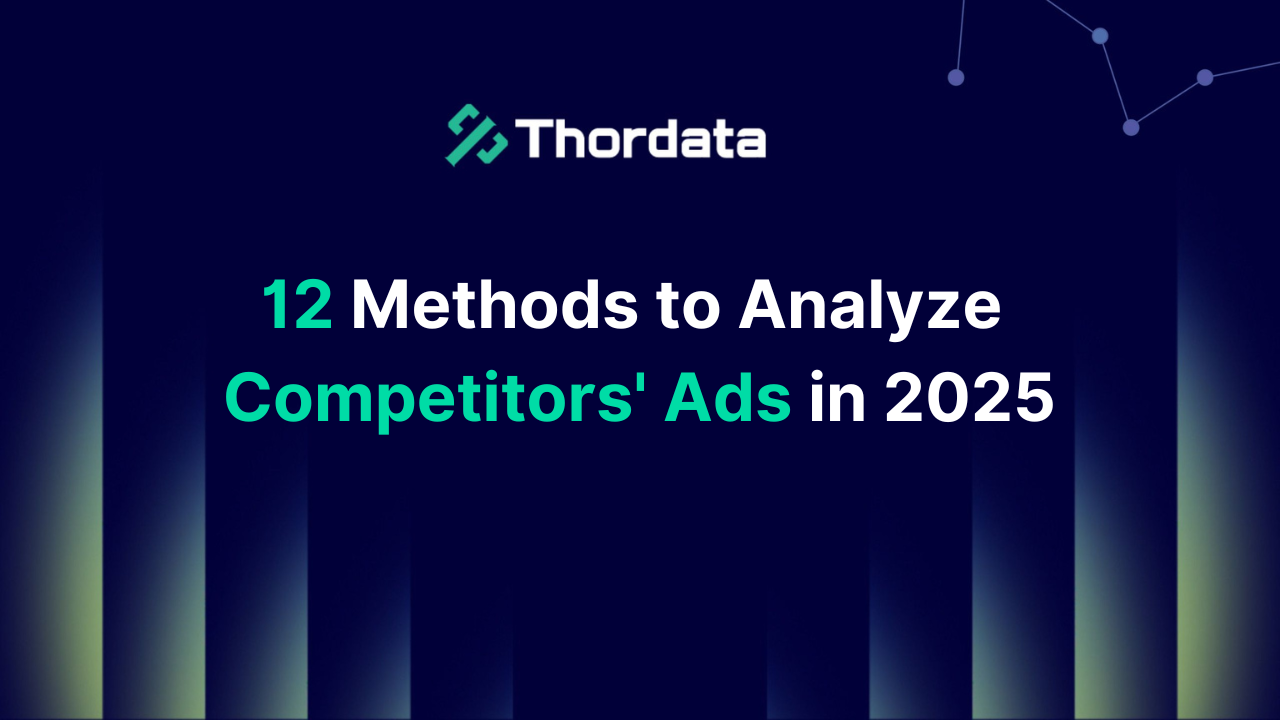

In a rapidly developing market, understanding your competitors’ advertising strategies not only helps you gain a competitive edge but also improves your ad effectiveness and return on investment.
By deeply analyzing your competitors’ ads, you can uncover their success strategies, identify potential market opportunities, and adjust your own advertising strategies. Closely monitoring your competitors’ ads allows you to quickly gather insights into their advertising strategies and business trends, enabling you to gain a competitive advantage in the market. In this article, we will detail how to use advertising analysis tools to perform an in-depth analysis of competitors’ ads.
Why is Analyzing Competitors’ Ads So Important?
An analysis helps you better understand your competitors’ market positioning, ad effectiveness, and advertising strategies. By monitoring and studying competitors’ ads, you can:
1. Identify Market Trends:
Understand your competitors’ ad activities at different times, helping you adjust your strategies in response to market changes.
2. Optimize Ad Creativity:
Analyze the design, copy, and visual elements of ads to find the most effective ad approaches, improving conversion rates.
3. Monitor Ad Spending:
Understand your competitors’ ad budgets and investments, helping you allocate your own advertising budget efficiently.
4. Uncover Market Gaps:
By analyzing your competitors’ weaknesses, identify potential market opportunities and create more competitive marketing strategies.
What Aspects Should We Focus on?
To fully analyze your competitors’ ads, you should focus on the following key areas:
1. Basic Data Collection
You need to understand your competitors’ current ad data, such as website traffic, market share, user demographics, click-through rates, and conversion rates. These basic data will help you assess the actual effectiveness of competitors’ ads. Analyzing competitors also helps you gain a deeper and more comprehensive understanding of your own user personas.
2. Ad Spending and Budget Allocation
Study your competitors’ ad budgets and spending methods, helping you plan your own ad spending to avoid unnecessary waste.
3. Advertising Strategy
Observe how your competitors deliver their ads, their creative methods, target audiences, and the advertising marketing strategies they currently use.
4. Copy and Visual Elements
Understand the tone of your competitor’s ad copy and their visual design, including color schemes, typography, font sizes, logos, video and audio usage, etc. These elements directly influence the attractiveness of the ads and user conversion.
5. Trend Analysis
Analyze the trends of your competitors’ ads over time, helping you predict future market directions and adjust your ad strategies.
12 Methods to Help You Analyze Competitors’ Ads in Depth
Here are 12 practical methods to help you analyze competitors’ ads:
Method 1: Use Google Search 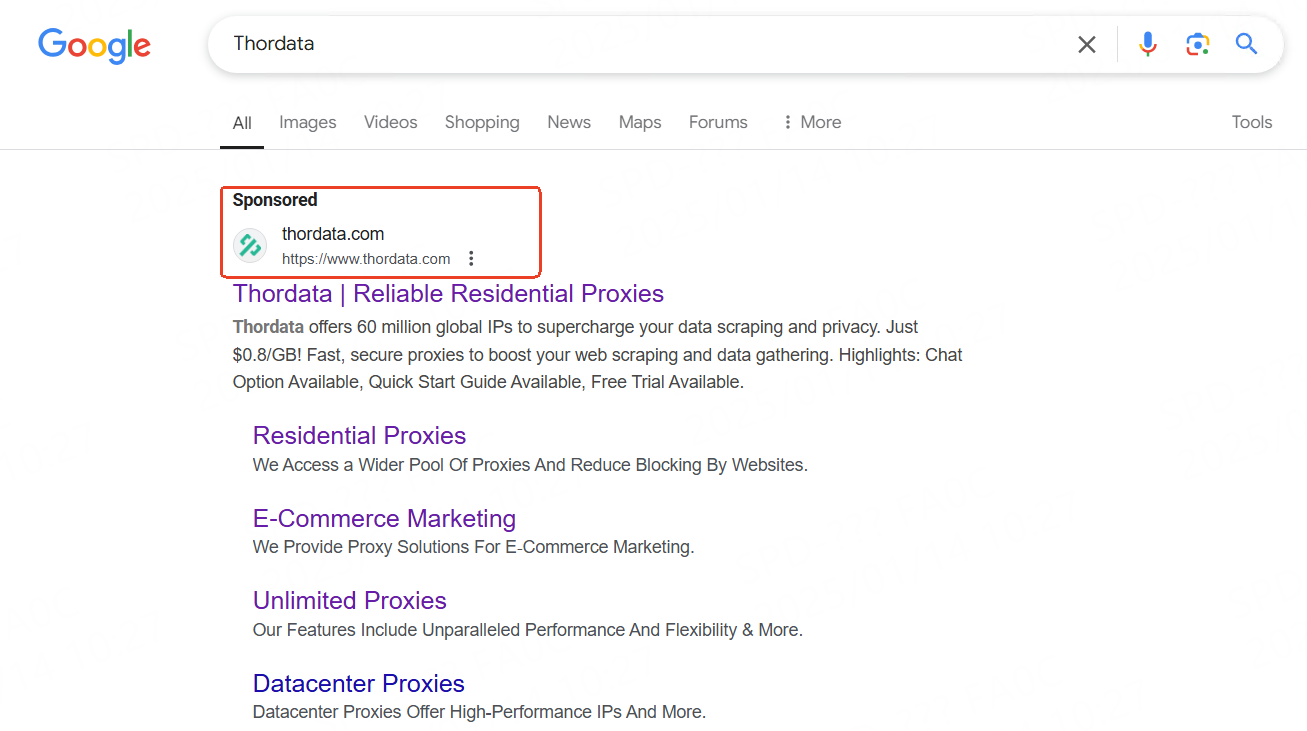
When you search for industry keywords or brand terms, you often see ads labeled “Sponsored.” These ads appear at the top or bottom of search results, indicating that the advertiser is promoting through Google Ads. By checking the ad’s position, you can understand your competitors’ ad investments and their bidding strategies.
Clicking on a competitor’s ad link will take you to their landing page and ad copy. The design, promotional copy, images, and videos on these pages are carefully crafted by competitors to attract target users. You can learn from their copywriting techniques, creative ideas, and user experience optimization methods.
Method 2: Google Transparency 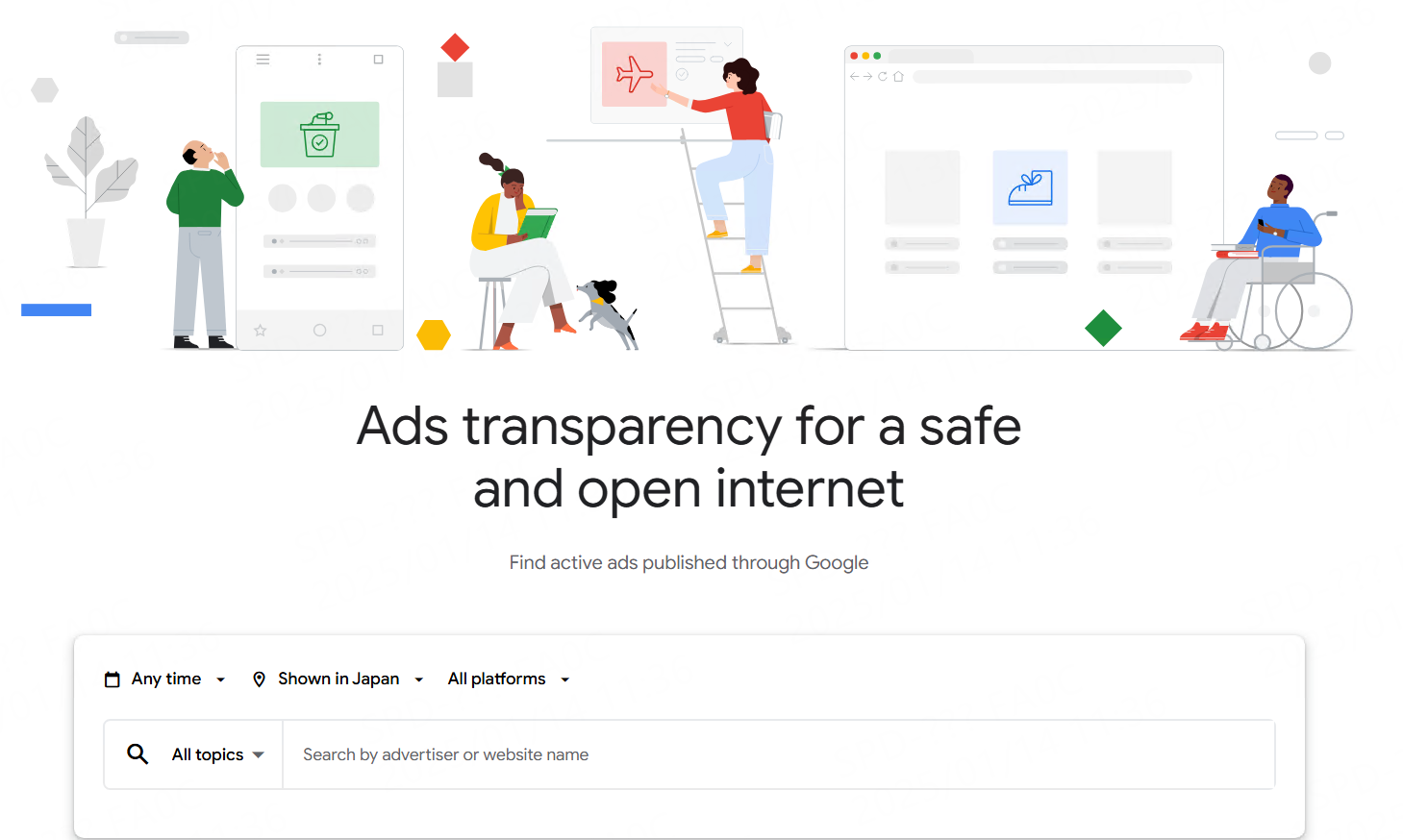
Google Transparency is a free tool provided by Google for advertisers, offering detailed data about ad publishing activities to help advertisers and market analysts understand competitors’ advertising activities on Google platforms. It is a powerful tool that provides transparent advertising data, enabling you to make more insightful decisions in a competitive market. 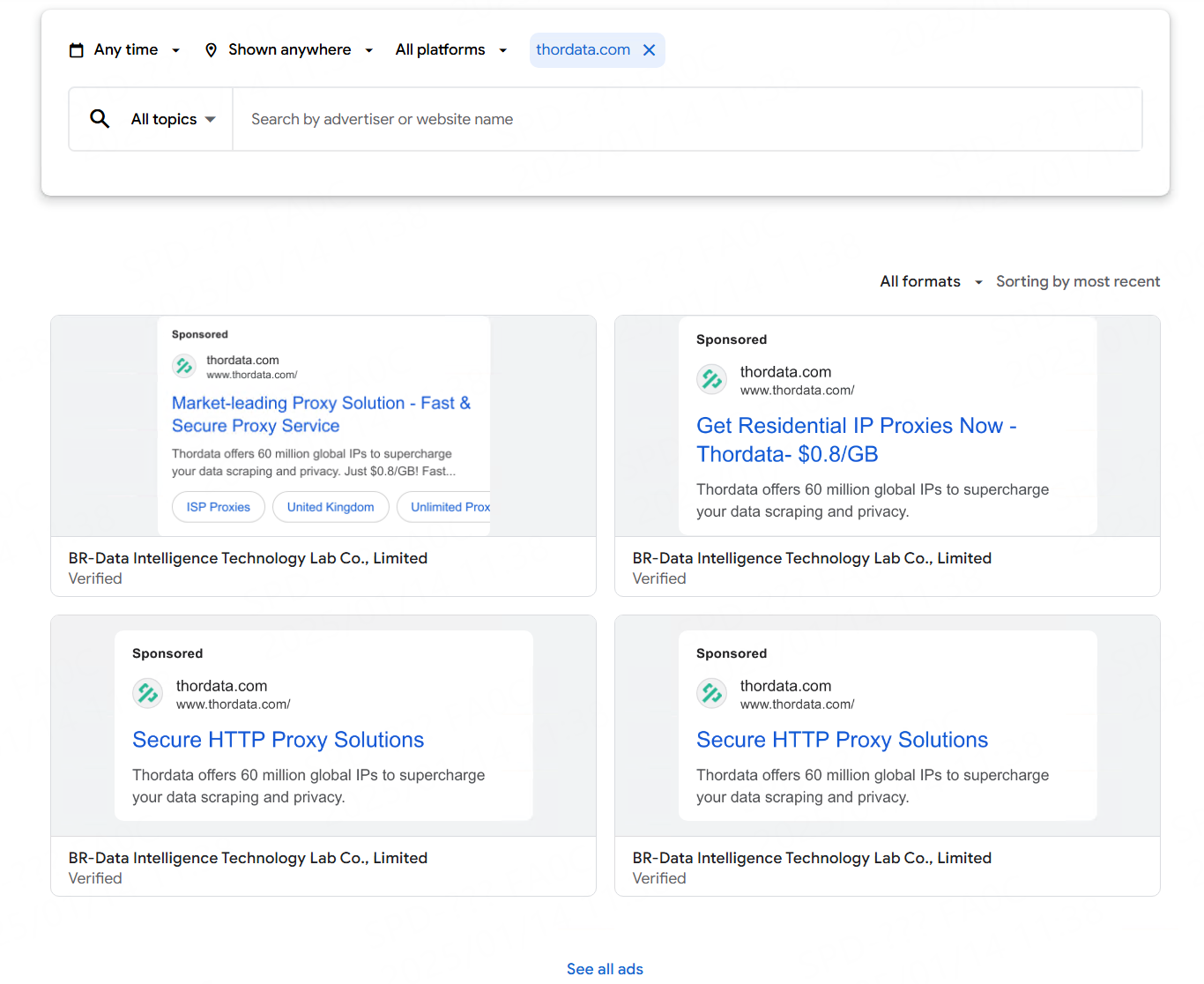
Google Transparency allows you to filter ad activity data by time and location, which means you can view ad placements in specific periods or regions (such as countries or cities). For example, you can see how much competitors spend on ads during a particular holiday or promotional season, or how they perform in specific markets.
Google Transparency also shows data for other ad display platforms like Google Display Network (GDN), YouTube ads, and Google Shopping, so you can analyze competitors’ ad strategies across multiple platforms.
Method 3: Use Social Platforms like Facebook and TikTok 
Directly observe your competitors’ advertising activities on social platforms to understand their ad frequency, creative approaches, and target audience.
You can see “Sponsored” tags in Facebook’s feed, indicating that the ad is placed on Facebook. Liking and commenting on your competitors’ posts will lead the platform to believe that you are interested in similar content, so you will see more ads from competing products. 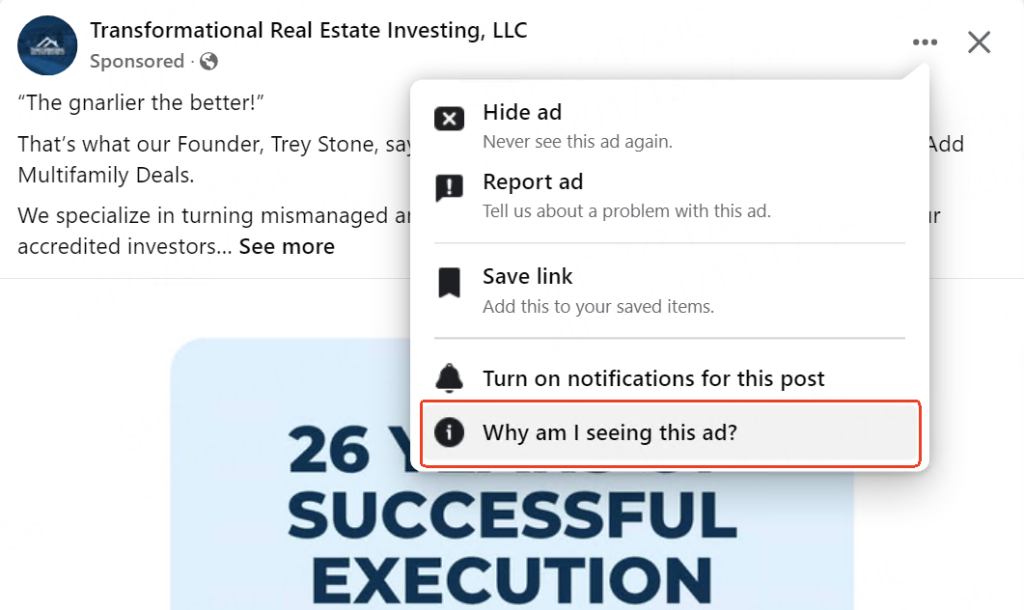
By clicking on the ads, you can further learn about the content, marketing plan, and target audience of the competitor’s ads.
Method 4: Facebook Ads Library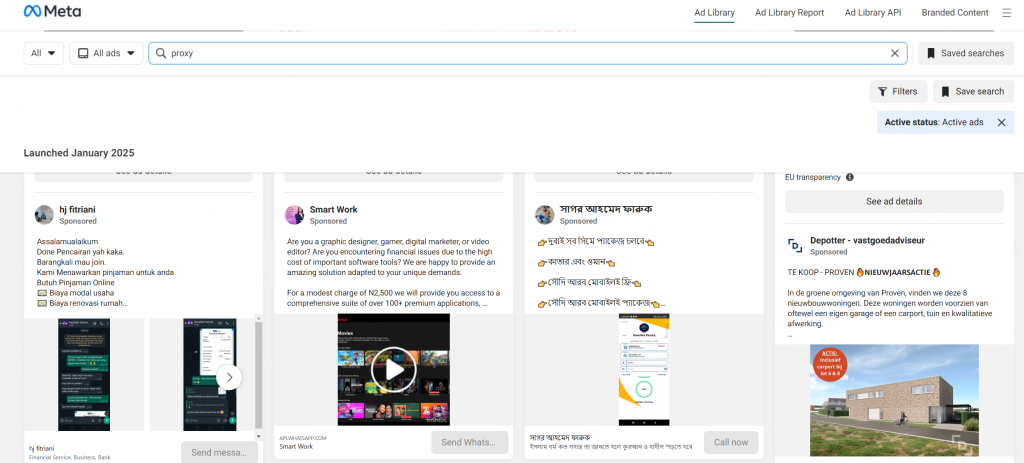
The Facebook Ads Library allows you to view your competitors’ ad campaigns on Facebook, and understand their ad materials, goals, and delivery strategies.
The Facebook Ads Library is a free tool where you can enter keywords, and select the country range, and the type of ad. By entering your competitors’ brand names or core keywords, you can search for their ads.
The Ads Library helps you quickly understand the ad copy, format, and visual elements of your competitors’ ads. By learning about where and how competitors are placing their ads, you can further optimize your business decisions.
You can filter ads by language, advertiser, platform (Facebook and Instagram), ad format (image, text, video), ad validity, and date, allowing you to comprehensively analyze your competitors’ ad strategies from multiple dimensions.
Method 5: TikTok Creative Center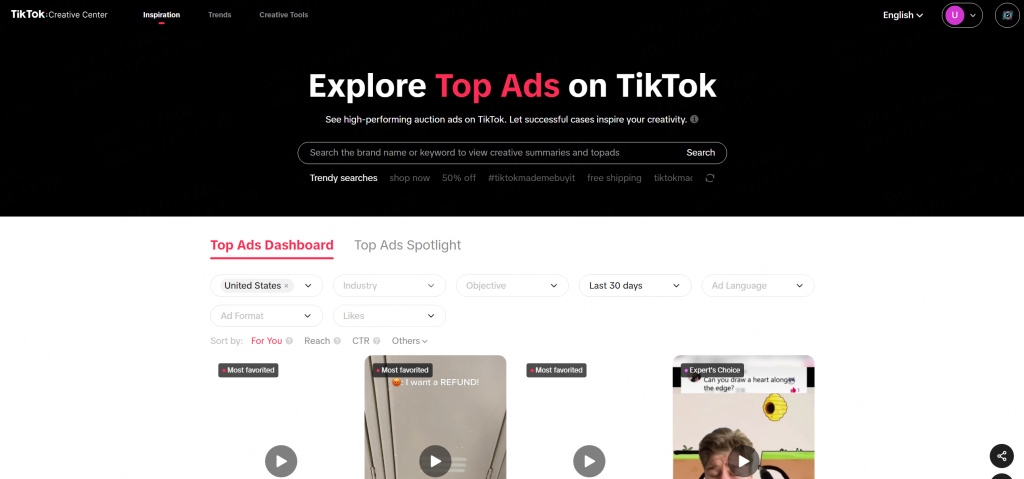
TikTok Creative Center is a free analytical tool that allows you to search for and analyze your competitors’ ads on TikTok, and evaluate their creativity and ad effectiveness. You can directly search for competitors’ brand keywords to view their ads on TikTok. TikTok Creative Center also allows you to filter by country, industry, product, date, language, etc., to study competitors’ ad strategies.
You can further analyze industry-related keywords by clicking on the “Inspiration” > “Keyword Insight” feature. This function helps you identify high-potential keywords related to the industry, providing search volume, competition level, and trend information. You can filter out keywords suitable for your business or marketing goals and analyze their trends to make more precise decisions in content creation, SEO optimization, and marketing strategies.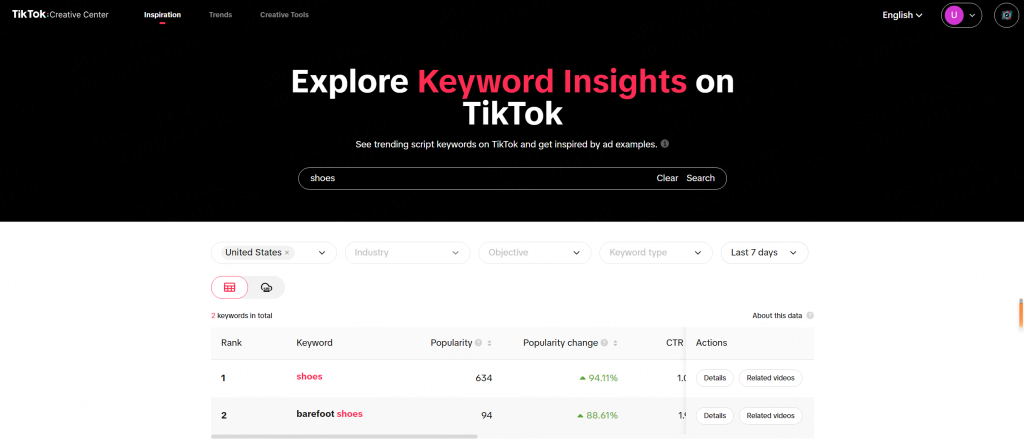
For example, if you’re running a cross-border e-commerce business, using “Keyword Insight” to analyze relevant cross-border e-commerce keywords can help you understand which products or services are seeing rising demand, which keywords might be future market hotspots, or which competitors are already dominating certain keywords. This allows you to better target your audience, adjust marketing strategies, and improve search engine rankings.
Method 6: Twitter/X Ads Library
The Twitter Ads Library is a free tool provided by Twitter for advertisers and marketers, aimed at helping users analyze ad performance and strategies. Through this platform, you can view ads from various advertisers on Twitter, and understand their ad creativity, delivery methods, audience targeting, and other key factors to gain valuable market insights.
By entering your competitors’ Twitter accounts, you can filter ads by date, region, and other related information. After generating the report, you’ll receive a detailed advertising data report, including the ad’s publish time, audience reach, ad content, and effectiveness.
This tool helps you analyze competitors’ ad strategies, understand what products or services they are promoting on Twitter, and examine their marketing techniques and audience targeting. By using this data, you can optimize your ad creativity and develop more targeted ad plans to enhance your market competitiveness and ad performance.
Method 7: LinkedIn Ads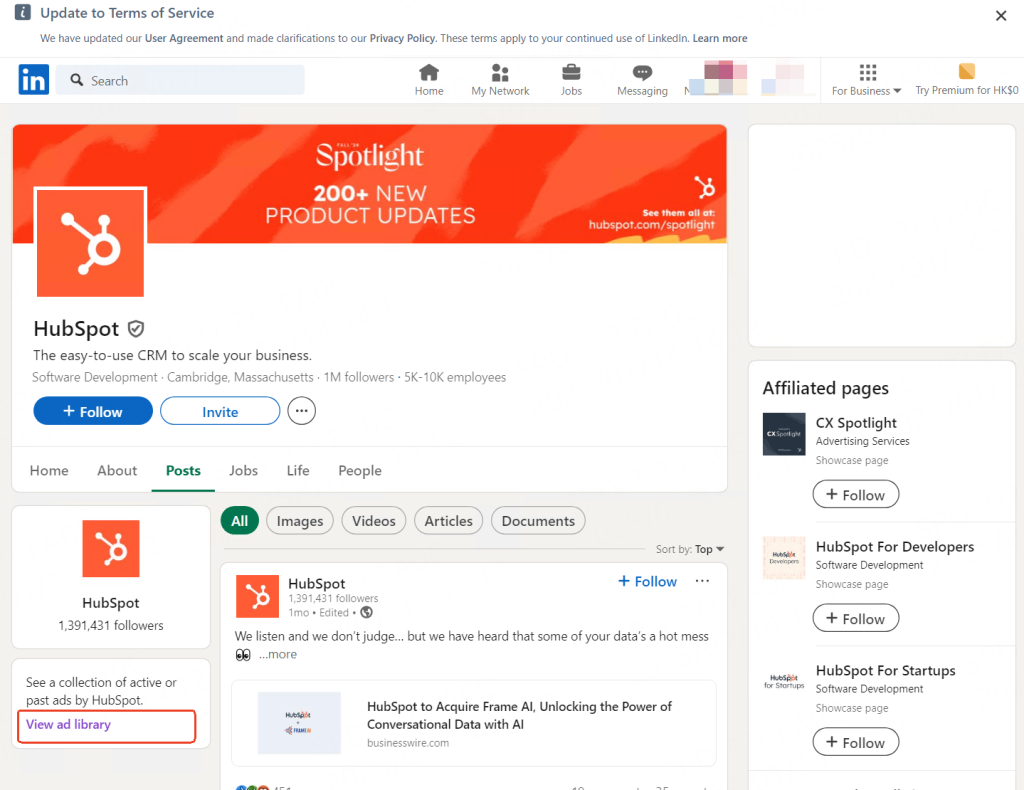
The LinkedIn Ads Library is a highly valuable free tool, especially for the B2B market, as it helps you analyze competitors’ career-related ads and their target audience. Through this tool, you can explore the ads placed by competitors on LinkedIn and analyze their ad strategies and target audiences.
To use this tool, visit your competitor’s official LinkedIn page and click on the ads they have posted. In the lower right corner of the post, you’ll see an option to “View All Ad History.” This feature allows you to get detailed information on all ads posted by that company, including the ad’s publish time, content format, audience targeting, and more.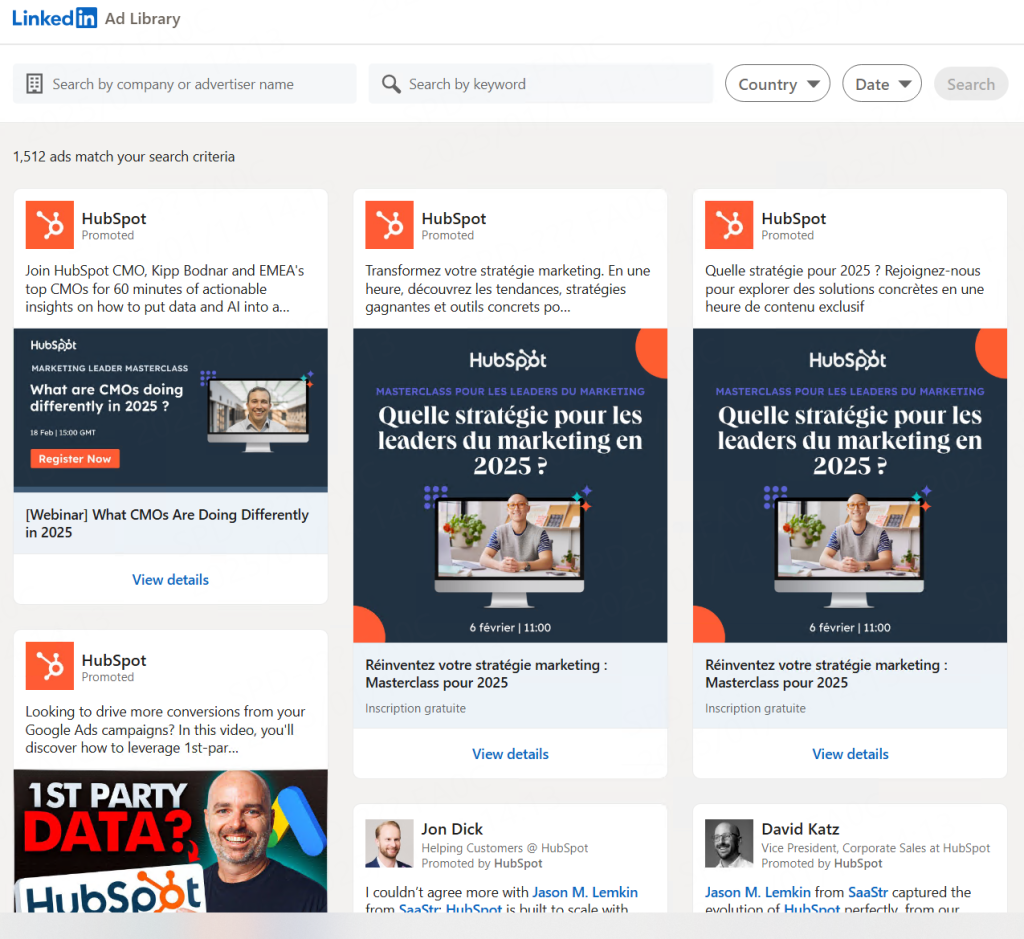
Additionally, LinkedIn’s Ads Library supports multi-dimensional filtering, allowing you to filter ads based on country, region, time range, company name, or specific keywords. This not only lets you understand your competitors’ ad strategies but also gives you insight into global industry trends and demand changes in specific markets.
Method 8: SEO Tool Ahrefs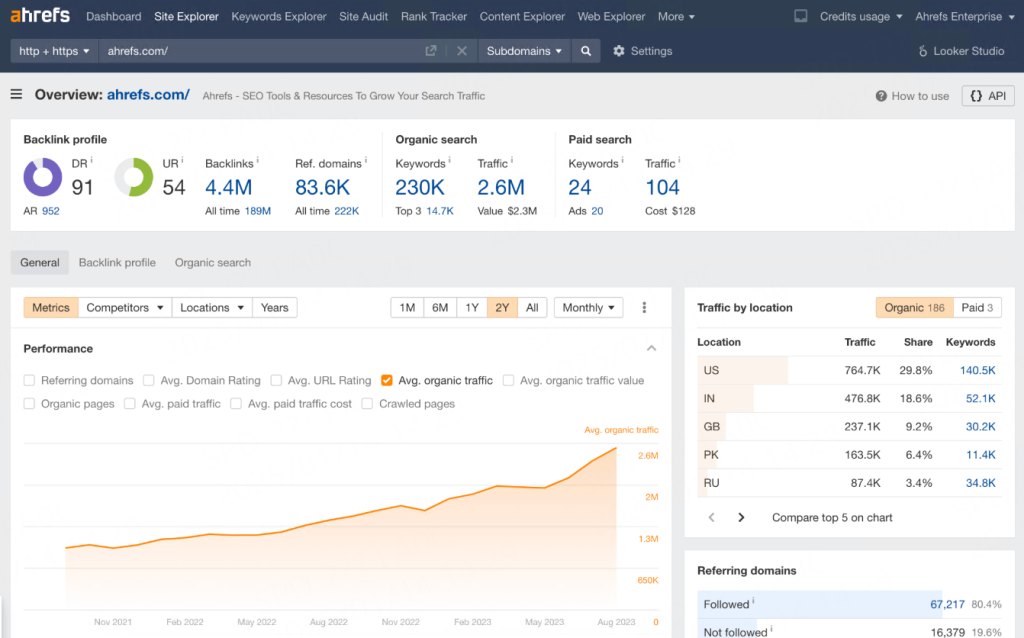
Ahrefs is a powerful SEO tool that provides comprehensive competitive analysis features, helping you view your competitors’ performance on search engines and uncover their ad strategies.
Through site analysis, Ahrefs lets you examine any website’s details, including traffic, keyword rankings, backlinks, and SEO health. You can use this function to analyze your website or your competitor’s web pages to gain insights into their strengths and weaknesses.
Method 9: SEO Tool Semrush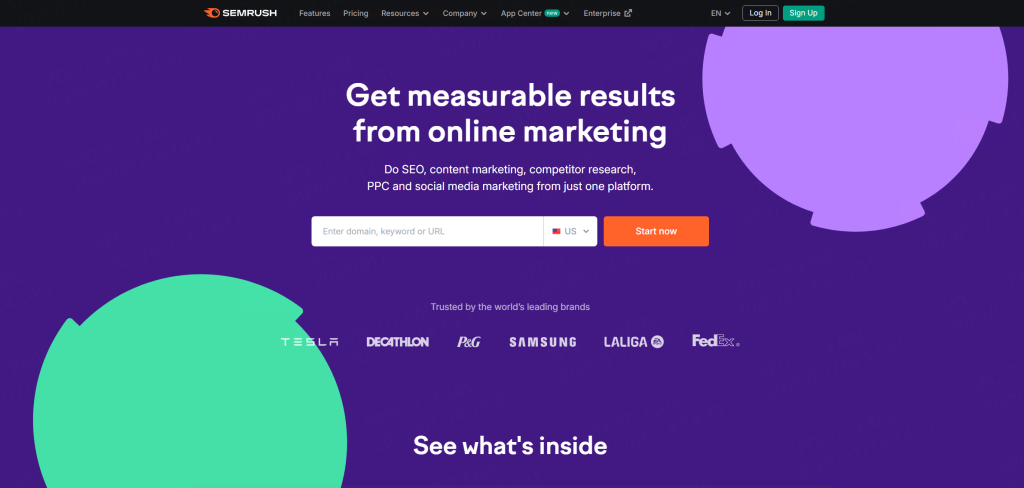
Semrush is an all-in-one digital marketing tool that allows you to deeply analyze your competitors’ ad strategies, keyword placements, and ad performance. With Semrush, you can learn about the traffic sources of your competitor’s website and see the ratio of organic to paid traffic. Organic traffic reflects your competitor’s ranking and exposure on search engines, while paid traffic indicates their investment in paid ads.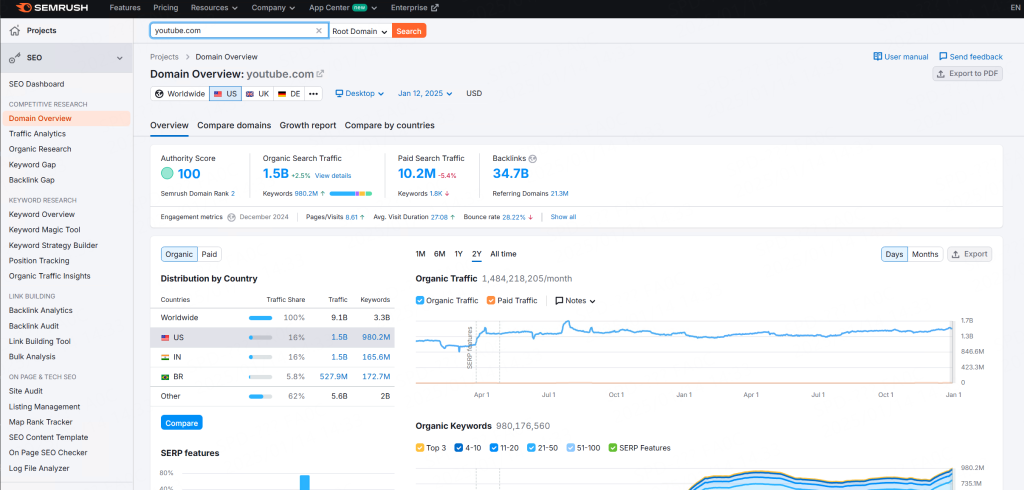
These data help you assess your competitor’s focus and effectiveness on SEO and PPC, enabling you to adjust your own marketing strategies. Semrush’s pricing is relatively high, with the lowest plan starting at $140 per month, suitable for enterprises requiring professional analysis.
Method 10: SEO Tool Similarweb 
Similarweb helps you analyze your competitors’ website traffic sources and ad sources, revealing their ad delivery methods. In the ad overview section, you can quickly learn about the number and traffic of ads. Similarweb also allows you to view monthly growth data, showing ad publication times, ad creativity, and corresponding webpage links.
Method 11: SEO Tool Adbeat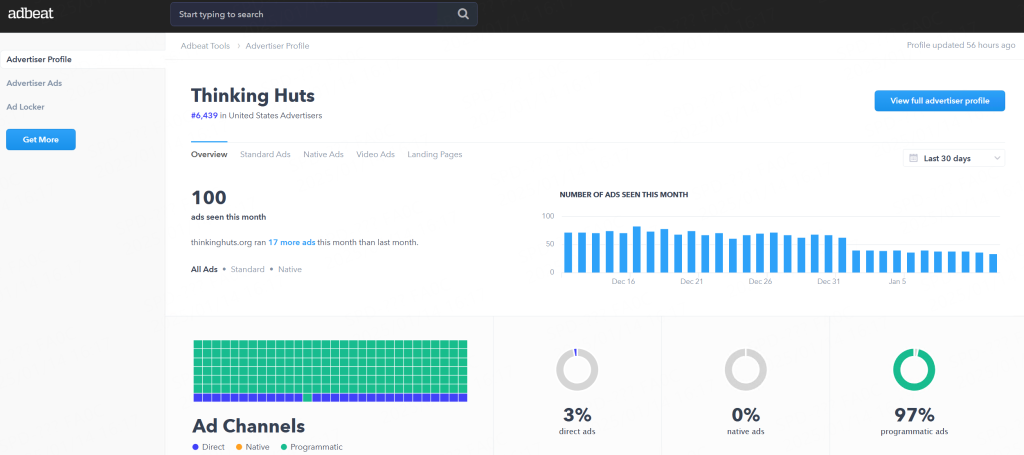
Adbeat provides competitive ad monitoring data to help you gain insights into ad effectiveness and strategies. Adbeat allows you to create a free account to view competitors’ ads, but if you need more queries and data, you’ll need to choose a plan. It has three pricing tiers, with the standard plan priced at $249/month. Like other SEO tools, Adbeat supports viewing traffic sources and ad quantities of websites, offering insights into ad trends.
Method 12: Build Your Own Ad Monitoring Tool with Thordata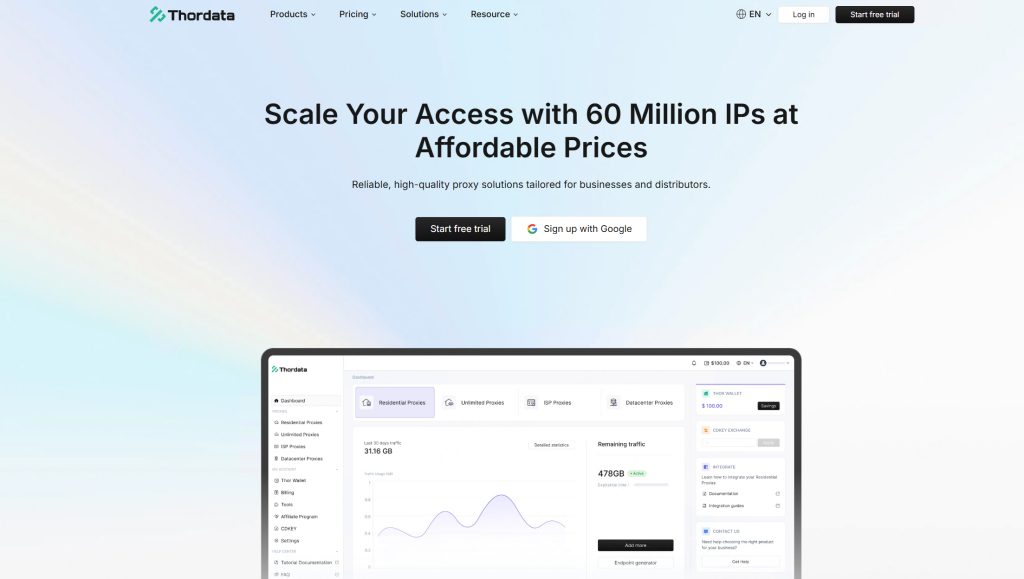
Thordata provides powerful IP proxy services to help you build a customized ad monitoring tool that tracks competitors’ ad activities in real time.
Thordata offers IP resources from over 195 countries and regions, covering a global range, enabling you to accurately obtain ad data from competitors in different regions and gain a comprehensive understanding of market dynamics.
One of its core advantages is the ability to ensure anonymous access. The residential proxy IPs provided by Thordata come from real residential users worldwide, meeting compliance and ethical standards. These IPs can bypass CAPTCHAs and access restrictions, ensuring that you can gain the highest-level access, anonymously monitoring competitors’ websites and their ad performance.
Additionally, Thordata offers continuous automatic IP rotation, which supports scheduled IP switching, effectively avoiding IP restrictions caused by frequent access. With this feature, you can continuously and stably collect ad data while ensuring privacy, and improving the efficiency and accuracy of ad monitoring.
3 Tips for Successfully Analyzing Competitor Ads
1. Regularly Update Data
Competitors’ advertising campaigns are constantly changing, so you need to track their ad data regularly to stay updated on the latest ad trends and performance.
2. Consider Multiple Factors
Don’t focus on just one aspect; consider the ad’s creative, keywords, budget, and distribution channels to form a comprehensive competitive analysis report.
3. Compare with Industry Data
Compare your competitor’s ad data with the industry average to assess the effectiveness of their campaigns and identify areas for improvement.
Challenges in Monitoring Competitor Ads
1. Inaccurate Data
Some ad platforms may have delayed or inaccurate public data, which can lead to imprecise analysis results.
2. Neglecting Ad Creativity
Some people focus only on exposure and click-through rates, neglecting the quality of creativity and content, which can result in one-sided analysis.
3. Budget Allocation Issues
Some tools only provide data from a single dimension, making it difficult to assess a competitor’s ad budget allocation strategy accurately.
Conclusion
In a rapidly developing market, understanding competitors’ advertising strategies is crucial for gaining a competitive advantage and improving ad performance. This article discusses various tools and methods, such as Google Transparency, social media platforms like Facebook and TikTok, and SEO tools like Ahrefs and Semrush, to help conduct thorough competitor ad analysis. By proficiently using advertising analysis tools, businesses can identify market trends, optimize ad creativity, monitor ad spend, and uncover potential market gaps.
Frequently asked questions
How often should I conduct ad analysis?
The frequency of ad analysis depends on market changes and competition. Generally, it’s recommended to perform a comprehensive analysis quarterly and check key data and trends monthly.
Are there free ad analysis tools?
Yes, platforms like Facebook Ads Library, TikTok Ads Library, Google Keyword Planner, etc., offer free access. While their features may be limited, they are sufficient for initial competitive analysis.Using these methods and tips, you can systematically understand your competitors’ ad strategies, optimize your own ad campaigns, and enhance your market competitiveness.
What is an example of a competitive ad?
A competitive ad is one where a company highlights its products or services and compares them to its competitors, usually to showcase superior features, prices, or value. Pepsi vs. Coca-Cola is a typical example of a competitive ad, where both brands compete through taste tests and other advantages.
What free ad analysis tools are available?
Google Transparency, Facebook Ads Library, Twitter Ads Library, TikTok Creative Center, and LinkedIn Ads all provide free ad analysis. Additionally, SEO tool Semrush offers a free trial. Registering with Similarweb also grants access to some free features.
About the author
Clara is a passionate content manager with a strong interest and enthusiasm for information technology and the internet industry. She approaches her work with optimism and positivity, excelling at transforming complex technical concepts into clear, engaging, and accessible articles that help more people understand how technology is shaping the world.
The thordata Blog offers all its content in its original form and solely for informational intent. We do not offer any guarantees regarding the information found on the thordata Blog or any external sites that it may direct you to. It is essential that you seek legal counsel and thoroughly examine the specific terms of service of any website before engaging in any scraping endeavors, or obtain a scraping permit if required.